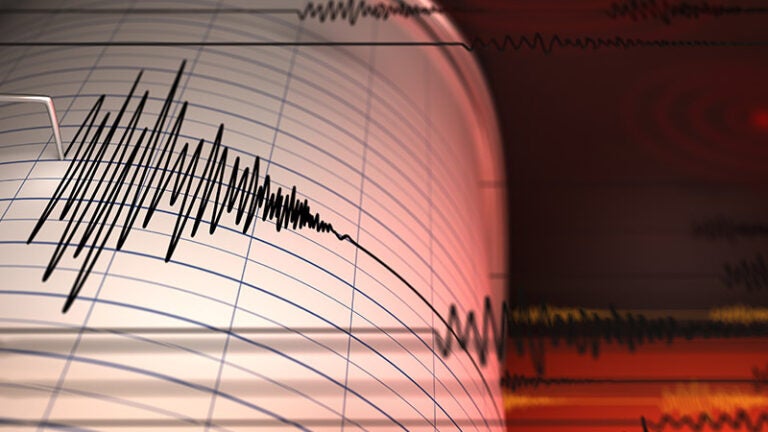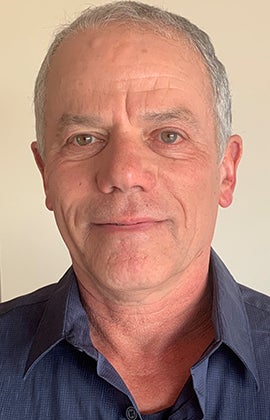
Computer wizardry gives earthquake researchers deeper insight into big quakes and the motion they generate
Earthquakes are an omnipresent source of anxiety in California, where the San Andreas fault slices through most of the state and threatens at any moment to erupt into “the big one.” Even the smallest seismic shiver sends residents to search Google for news and sets “Earthquake Twitter” ablaze.
The Southern California Earthquake Center (SCEC) at the USC Dornsife College of Letters, Arts and Sciences, works to help assuage some of those fears. Since 1991, the center has been researching earthquakes to better understand the phenomenon and, perhaps someday soon, to forecast them with much higher accuracy than currently available.
SCEC also serves as a source of rational information on how to prepare for earthquakes and what to do when they arrive. They help guide and educate the public through campaigns and resources in partnership with various governments, nonprofits, businesses and other organizations around the world. Each year, their Great ShakeOut Earthquake Drill helps millions around the world get comfortable performing the “drop, cover and hold on” technique if the ground starts shaking.

Center Director Yehuda Ben-Zion, professor of Earth sciences at USC Dornsife, recently explained what SCEC has been working on and how their new initiatives — many of which are part of USC’s effort to use computing for the public good — could help us start predicting when the next one will appear.
How did you become interested in earthquakes?
Earthquakes are an excellent example of a complex natural process that is not well understood and has considerable societal relevance. I became interested in earthquakes … in graduate school, when analysis methods of complex systems with many interacting processes started to be applied to various problems in Earth sciences and other topics (e.g., in physics and chemistry and biology).
The aspects of earthquake research I find especially rewarding are the ability to interact with highly capable scientists and students from multidisciplinary communities that are all engaged in earthquake studies, and the opportunity to conduct field studies in great natural environments around the world, which are sometimes quite remote and spectacular.
SCEC recently won the 2021 HPCwire Editor’s Choice Award for Best Use of High-Performance Computing in the Physical Sciences. How can high-performance computing help us better understand earthquakes?
Earthquakes and the seismic ground motion they generate are associated with a complex interaction between fault failure processes and propagation of seismic waves from the fault through the Earth.
To solve such complex problems, SCEC pioneered research with high-performance computing, starting with former SCEC Director Tom Jordan and expanding over the ensuing years. High-performance computing uses powerful supercomputers to simulate and analyze data, which produces much faster results than your standard desktop computer.
The results are improving our understanding of many earthquake phenomena. It’s clarifying how often earthquakes of varying magnitudes are expected in different regions, and how factors such as the direction that the fault ruptures and wave resonance in sedimentary basins, where loose rocks and soil settle over millions of years, all combine to increase ground motion at certain locations. The second example is illustrated nicely in this recent animation.
What are some ways the public can better understand and prepare for earthquakes using SCEC resources?
Our Seven Steps to Earthquake Safety provide guidance for what to do before, during and after earthquakes. These documents are available in 14 languages and include guidance for people with disabilities.
Since 2008, SCEC has helped coordinate the annual Great ShakeOut Earthquake Drill. Millions have participated across the United States, the U.S territories and in many countries around the world.
What advances or breakthroughs in earthquake science do you anticipate in the next decade?
There are excellent opportunities in earthquake science, and many tie directly into initiatives SCEC is currently at work on.
Advances in sensor technology and deployments near major faults will allow us to close critical gaps in knowledge and record fundamental new information on earthquake processes. Advances in machine learning and other data-mining techniques will let us extract more detailed information from this recorded data. The combination of these breakthroughs should enable us to resolve many questions about earthquake processes and subsurface structures.
Progress in research computing and earthquake simulators will improve our understanding of the processes that lead to large earthquakes. This, combined with the anticipated improved data and advanced analyses of signals, has a high potential for improving our ability to forecast large earthquakes.
Advanced computer simulations of seismic ground motion will enable us to improve our estimates of direct and cascading earthquake hazards, like landslides. This will contribute to better building codes and other activities that can reduce the risk earthquakes pose to society.
What new projects is SCEC currently working on?
We’re working on an initiative to install dense arrays of sensors near large plate-boundary faults, where tectonic plates converge. This will greatly enhance the available data on what happens close to the source of earthquakes. SCEC is also developing a “Next-Generation Earthquake Simulator,” which will address key questions like what physical processes produce the conditions that allow for large earthquakes to occur.
We are also considering revamping our internship programs to further train students to take advantage of new computing and visualization techniques to solve grand challenges in earthquake science. These activities have been highly successful in the past, and we’re looking to engage other groups at USC in this endeavor.
What student opportunities is SCEC working on?
SCEC’s Office of Experiential Learning and Career Advancement program is supporting diversity and retention in the STEM workforce by providing research opportunities, networking, training and other resources to students and early career researchers and faculty in science, technology, engineering and math fields who lack readily available resources at their own institutions.
Over 700 undergraduates from diverse backgrounds have participated in SCEC’s Internships Programs. Through the SCEC Transitions Program, students and early career researchers are provided with mentor and mentee training, professional and career development guidance, and technical skills training during workshops, short courses and research visits.
About SCEC
The Southern California Earthquake Center is supported by the National Science Foundation and the U.S. Geological Survey. SCEC studies why and how earthquakes occur, evaluates their effects and helps societies prepare to survive and recover. Learn more at SCEC.org.